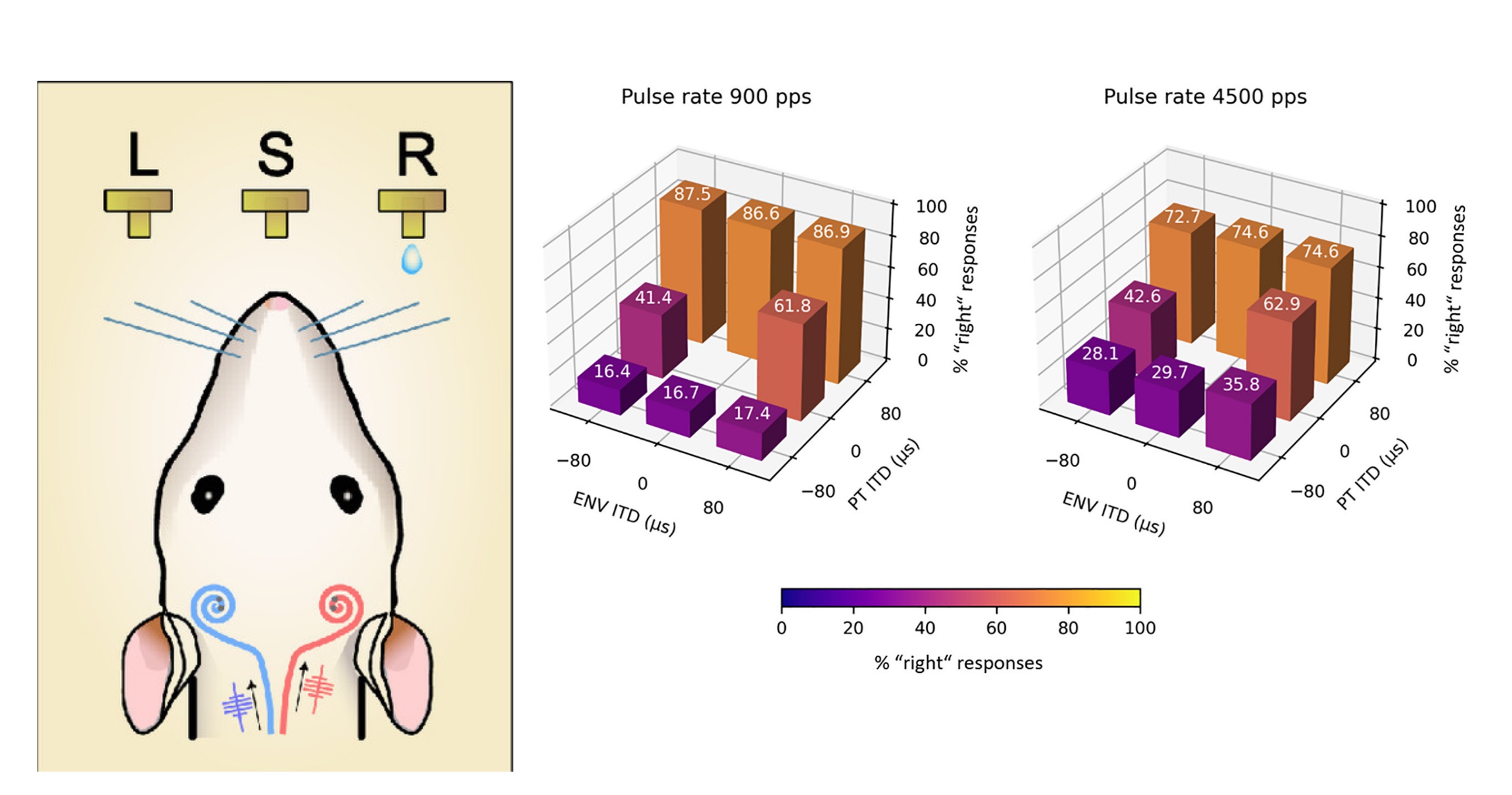CU Medicine and the Medical Center at the University of Freiburg in Germany reveal that precise timing of electrical pulses is key to overcoming limitations in current cochlear implant technologies used to restore hearing in deaf individuals
The Chinese University of Hong Kong (CUHK)’s Faculty of Medicine (CU Medicine) and the Medical Center at the University of Freiburg, Germany have found that the precise timing of the electrical pulse delivered by cochlear implants (CIs) can be key to assisting the brain detect subtle timing cues in incoming signals, thereby restoring and improving deaf individual’s capability of identifying the origin of a sound. The findings pave the way for improved cochlear implant designs, bringing new hope to deaf individuals.
The research, co-led by Professor Jan Schnupp from CUHK’s Department of Otorhinolaryngology, Head and Neck Surgery at CU Medicine and Gerald Choa Neuroscience Institute (GCNI), and Dr Nicole Rosskothen-Kuhl from the Department of Otorhinolaryngology in the Medical Center of the University of Freiburg, Germany, has been published in the prestigious international scientific journalProceedings of the National Academy of Sciences (PNAS).

Featured are research team members: (from left) Professor Jan Schnupp from the Department of Otorhinolaryngology, Head and Neck Surgery at CU Medicine and the Gerald Choa Neuroscience Institute (GCNI) of CUHK, and Dr Nicole Rosskothen-Kuhl from the Department of Otorhinolaryngology, Medical Center of University of Freiburg, Germany.
Lack of temporal precision in CIs may affect deaf people’s spatial hearing and pitch discrimination
Over one million patients with hearing impairments depend on CIs, which bypass the damaged inner ear hair cells and stimulate the auditory nerve through electrical pulses. However, CIs still have limitations. Under normal hearing conditions, the brain can distinguish between extremely small time intervals, as low as a few tens of microseconds (millionths of a second, or µs), either between the ears (interaural time differences, ITDs), to tell whether a sound comes from the left or right first, empowering humans with the ability of spatial hearing ability. Processing the temporal structure of sounds can also help in judging tone height, or pitch, not just for the appreciation of musical melody, but also for the discrimination of lexical tones in tonal languages such as Chinese. However, these abilities appear to be greatly reduced in the CI-stimulated brain.
The research team suspected that this is likely due to the fact that current CI devices primarily encode sound information in the amplitude of pulse trains (envelopes), neglecting the precise timing of the electrical stimulus pulses sent by these prosthetic devices. In other words, the coding strategies used by these devices assume that, as long as the electrical pulses grow larger and smaller in lock step with changes in sound intensity, then the precise timing of the electrical pulses would be unimportant. To test this hypothesis, the researchers needed to develop an animal model that allowed them to assess the effect of different stimulation strategies in isolation, without the confounding effects introduced into human studies by clinical care standards or patient histories.
They implanted CIs in eight early-deafened rats to indicate whether electrical stimuli delivered to their auditory nerves could be perceived as originating from specific sound sources. The animals quickly learned to lateralise even very small ITDs of 80 µs or smaller with high accuracy, displaying an ITD sensitivity similar to that in rats and humans with normal hearing but much better than that typically seen in human CI users with bilateral implants. The team then designed electrical stimulus patterns to evaluate the impact of ITDs based on the amplitude of a train of pulses and ITDs based on individual pulses. The result of the experiment showed that the animals’ perception depended very strongly on the ITDs of individual pulses and very little on the amplitude-based, “envelope” ITDs. This challenges existing clinical practice of CIs and calls for a redesign of CI stimulation strategies to better align with the auditory system’s natural sensitivity.

The research team set up two response spouts on both sides (see figure on the left) and a middle sprout to kick-start the experiment, during which electric pulses were delivered to deafened rats fitted with bilateral cochlear implants.
Findings showed that the rats could quickly learn to lateralise. Based on charts on the right, the perception of deafened rats largely hinged upon the interaural time differences of individual pulses (PT ITD) with an accurate response rate of nearly 90%; and much less on the amplitude of pulse trains (ENV ITD) with an accurate response rate of approximately 17%.
Dr Rosskothen-Kuhl explained: ‘‘The important findings challenge existing clinical applications, which may have overlooked the temporal features of the auditory input in the timing of stimulus pulses with the required precision. The new animal model allows us to overcome the limitations of existing CIs, while showing that temporal features can easily be resolved down to 80 µs or better only if these features are encoded in the timing of individual pulses, rather than pulse train envelopes.’’
Professor Schnupp added: “This groundbreaking study suggests that the poor spatial hearing and perhaps also the poor pitch discrimination experienced by many CI users, especially those deafened early in life, may stem from the way current devices deliver sound information. By prioritising pulse timing over envelope cues, we are able to unlock the brain’s innate ability to process binaural cues more effectively, benefiting more deaf patients by redesigning CI stimulation strategies.’’
The research is funded by CUHK’s GCNI, the Hong Kong General Research Fund, the Hong Kong Health and Medical Research Fund, the Shenzhen Science Technology and Innovation Committee, and the German Academic Exchange Service, with the support of Taube Kinder Lernen Hören e.V.It offers hope for improving binaural hearing in CI users, potentially enhancing their ability to locate sounds and understand speech in noisy environments. The researchers will conduct further studies to explore translational applications in human CIs, such as incorporating precise temporal encoding and improving the design of those CIs, with the vision of creating new-generation bionic ears.




